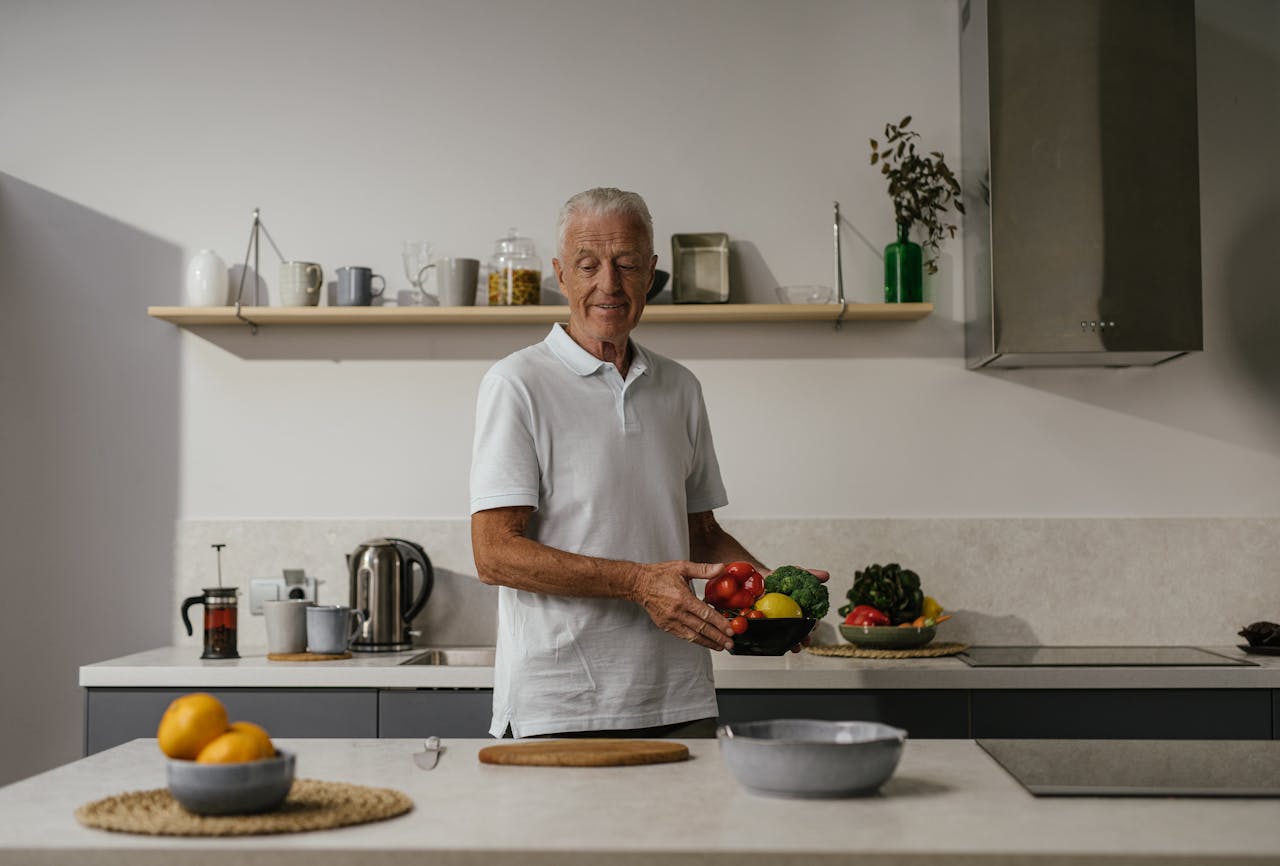Consider the basic needs of older people when designing a kitchen space. The process of aging brings with it a series of changes that affect the way people move, see, and interact with their environment. Understanding these changes can greatly assist in creating a kitchen design that accommodates the needs of older people. This article delves into the important elements to take into account when creating a stylish and functional kitchen for the elderly. We will explore the role of cabinets, lighting, appliances, and accessibility in providing a comfortable and accessible kitchen space.
Considering Cabinet Design in the Kitchen
Cabinets are an integral part of a kitchen’s decor and functionality. When designing a kitchen for an older user, consider the reach and access. Not all cabinets will provide easy access for people as they age.
Also to discover : What color schemes are trending for kitchens in the UK in 2023?
Cabinet design should allow for easy reach. This means lower cabinets should be of an appropriate height. Consider installing pull-out shelves or drawers in base cabinets to offer easy access to items stored at the back. This type of cabinet design reduces the need for bending or kneeling, which can be challenging for older adults.
Upper cabinets should be at a height that doesn’t require excessive reaching. Additionally, think about the door handles. D-shaped handles are easier to grasp than knobs. They offer better grip and thus make opening and closing the cabinets easier for people experiencing a decline in hand strength.
Also to read : How can you utilize under-cabinet spaces creatively in a kitchen?
Designing a Kitchen Space with Proper Lighting
Lighting plays a critical role in any room, and in the kitchen, it is no less important. As people age, their eyesight often declines, and they require more light to perform tasks effectively. Therefore, when designing a kitchen for the elderly, consider incorporating different types of lighting.
Task lighting is essential in areas where food is prepared. Under-cabinet lighting can illuminate countertops, making it easier to chop, measure, and cook. Similarly, lighting inside cabinets can aid in identifying the contents.
Ambient lighting offers an overall illumination of the kitchen. This can be achieved with ceiling-mounted fixtures or recessed lighting. Finally, accent lighting can highlight decorative elements or architecture in the kitchen, contributing to the stylish design while also increasing visibility.
Making Room for Accessible Appliances
The choice of appliances can significantly impact the functionality and accessibility of the kitchen. As you design this space, consider appliances that have easy-to-read controls and are at a comfortable height for older users.
For example, wall ovens can be installed at a height that eliminates the need to bend down. Similarly, refrigerators with a bottom freezer or side-by-side doors can offer easier access to food items.
Ensure that the appliances have easy-to-use controls. Dials or touch panels with clear, large fonts are ideal. Moreover, consider appliances with safety features, such as auto shut-off functions, to further enhance the safety of the kitchen.
Incorporating Aging in Place Features
Aging in place refers to the concept of designing spaces that allow people to live in their homes safely, independently, and comfortably, regardless of age or ability level.
In the kitchen, this can involve a variety of design elements. For example, consider installing lever-style door handles, which are easier for older adults to operate than traditional doorknobs. Slip-resistant flooring can prevent falls, while adjustable countertops can accommodate users of different heights or those who may need to sit while preparing meals.
Adding a Touch of Decor for a Stylish Kitchen
Lastly, remember that a functional kitchen doesn’t have to compromise on style. There are numerous ways to incorporate decor that is both aesthetically pleasing and practical for elderly users.
Choose colors that offer a good contrast. This helps in distinguishing different areas and items in the kitchen. An easy-to-clean backsplash not only adds style to the kitchen, but it also makes maintenance easier.
Consider decor items that double as aids for the elderly. For instance, a stylish clock with a large face enhances the decor and helps older adults keep track of time. Similarly, attractive storage jars with easy-open lids can store frequently used items, reducing the need to reach into cabinets.
In conclusion, designing a kitchen that is stylish and functional for elderly users involves careful consideration of their unique needs and abilities. By incorporating accessible features in the cabinet design, lighting, appliances, and decor, you can create a kitchen space that is not only enjoyable to use, but also promotes safety and independence for older adults.
Understanding the Importance of a Suitable Kitchen Layout
A proper kitchen layout is another essential element in creating a functional and stylish kitchen for older adults. At the core of a good design lies the concept of the ‘work triangle’. This design principle refers to the optimal positioning of the sink, refrigerator, and stove, which are the three key areas of activity in a kitchen. The idea is to minimize the distance between these areas, making the space more efficient and easier to navigate.
In an aging-in-place kitchen, an effective layout also allows for ample maneuvering space. This could be beneficial if the user requires mobility aids such as a wheelchair or walker. In these instances, a U-shaped or L-shaped kitchen design can offer more open space.
Consider consulting with general contractors or interior designers who specialize in universal design or aging in place. They can provide expert advice on how to best utilize the available kitchen space to meet the needs of older adults.
Incorporating the living room into the kitchen layout can also foster social interaction. As one gets older, the kitchen becomes more than just a place for cooking; it becomes a space for socializing and connecting with family members. An open floor plan allows for this fluidity, making the kitchen more inviting and less isolating.
Integrating Safety and Comfort Features in Kitchen Design
Aging can come with a host of physical challenges, and a well-designed kitchen should anticipate and address these. Integrating safety and comfort features into the kitchen design can go a long way in enhancing the usability of the space for older adults.
For instance, installing a pull-out pantry instead of conventional kitchen cabinets can reduce the need for bending or kneeling. Installing a wall-mounted pot filler near the stove can eliminate the need to carry heavy pots filled with water.
Adding a seating area in the kitchen can provide older adults with a place to rest while preparing meals. It can also serve as an area for dining, making the kitchen space more multi-functional.
To prevent slips and falls, consider installing slip-resistant flooring. Materials such as vinyl or cork can provide good traction and are also soft underfoot, reducing the risk of injury in case of a fall.
When it comes to countertops, rounded edges are safer than sharp ones. They can prevent injuries if an older adult stumbles or loses balance. Also, ensure that the countertops are at a comfortable height and depth for the user.
In conclusion, designing an accessible kitchen for older adults doesn’t have to be a daunting task. It requires consideration of their unique needs and the incorporation of certain elements in the design. Things like a suitable kitchen layout, cabinet design, appropriate lighting, accessible kitchen appliances, safety features, and stylish decor can all contribute to creating a comfortable, functional, and stylish kitchen for aging in place. By keeping these tips in mind, you can design a kitchen space that not only caters to the needs of older adults but also makes their daily life easier and more enjoyable.






